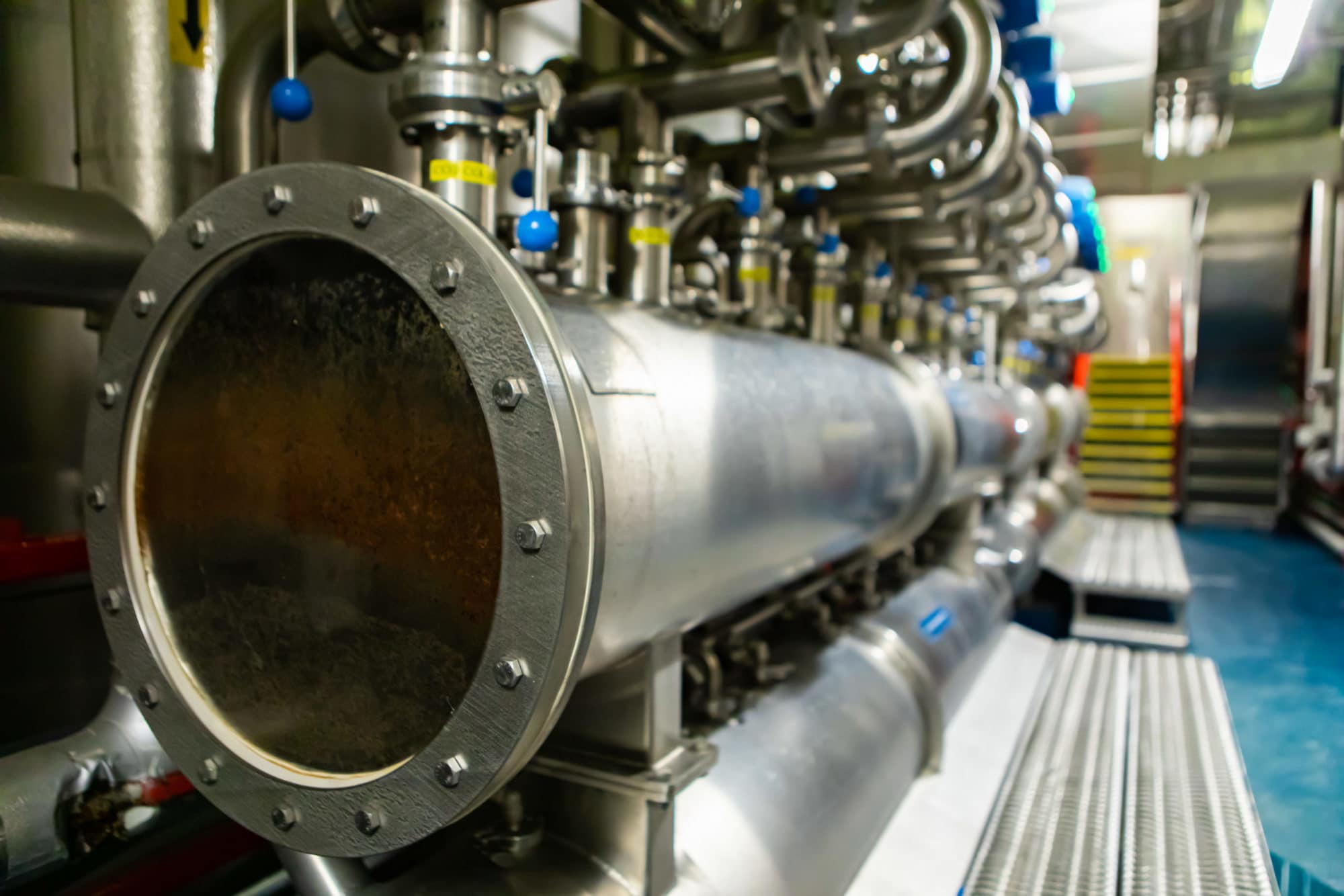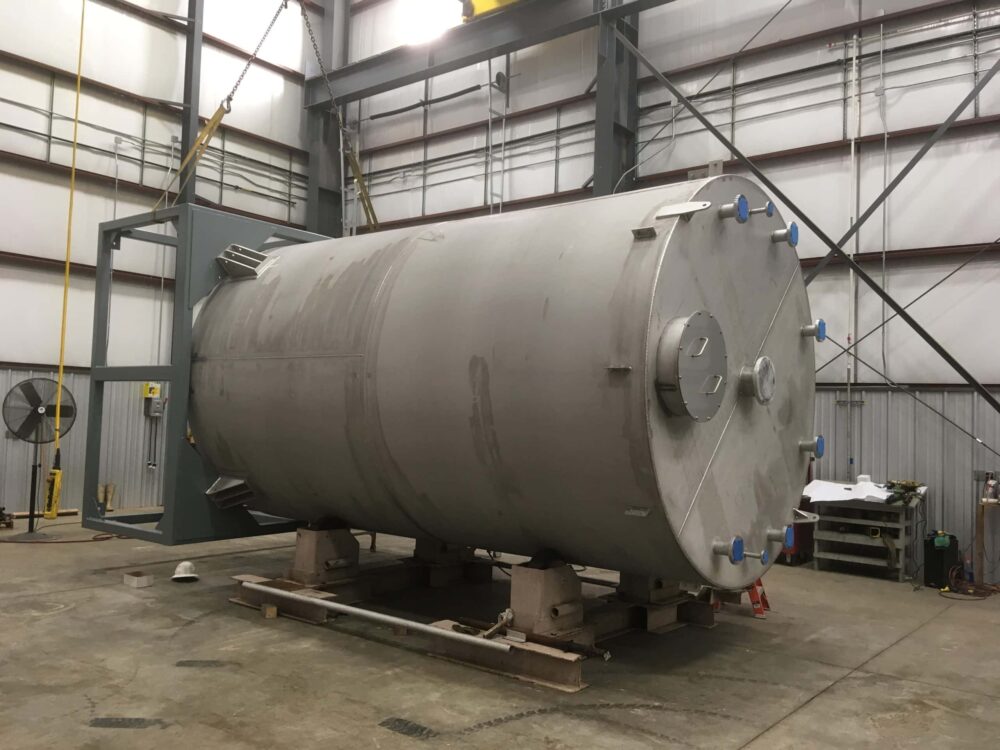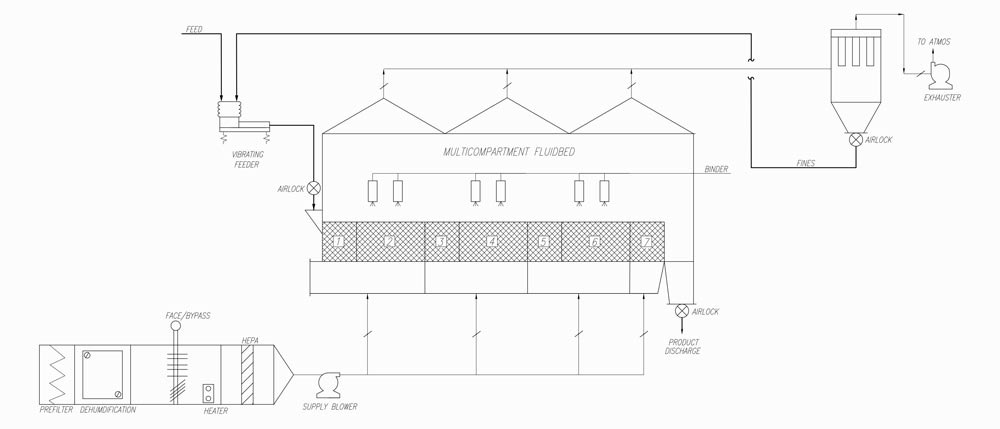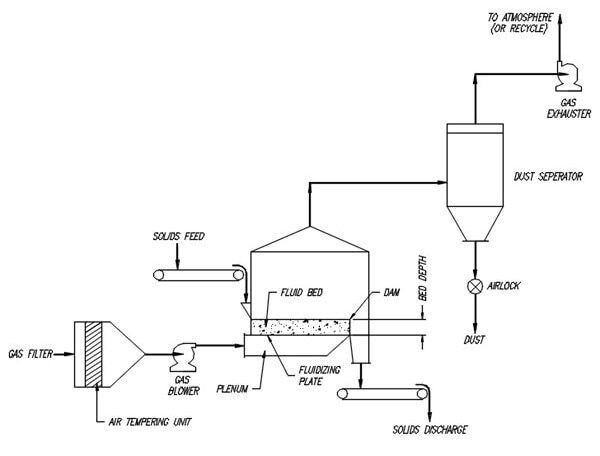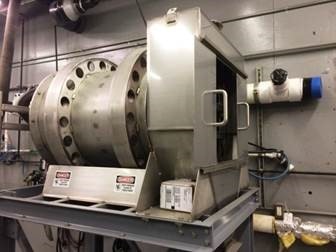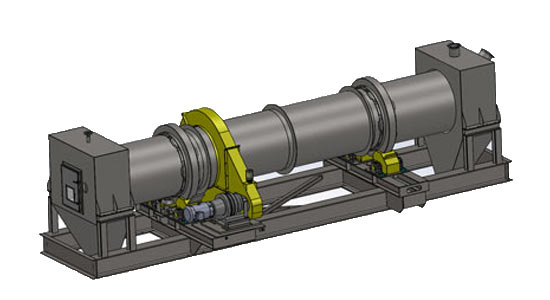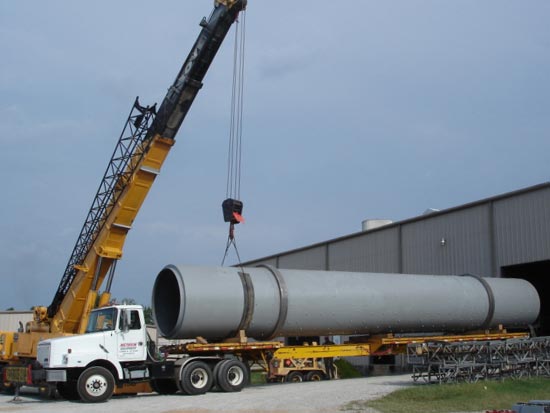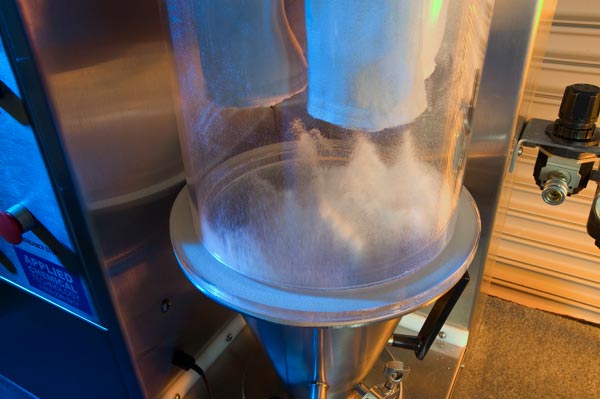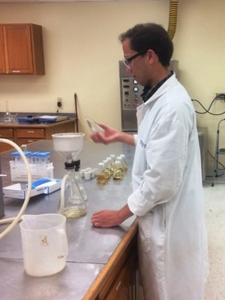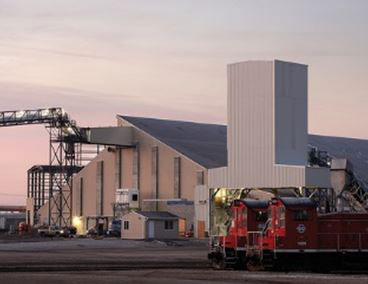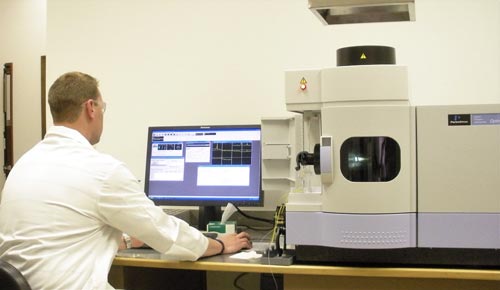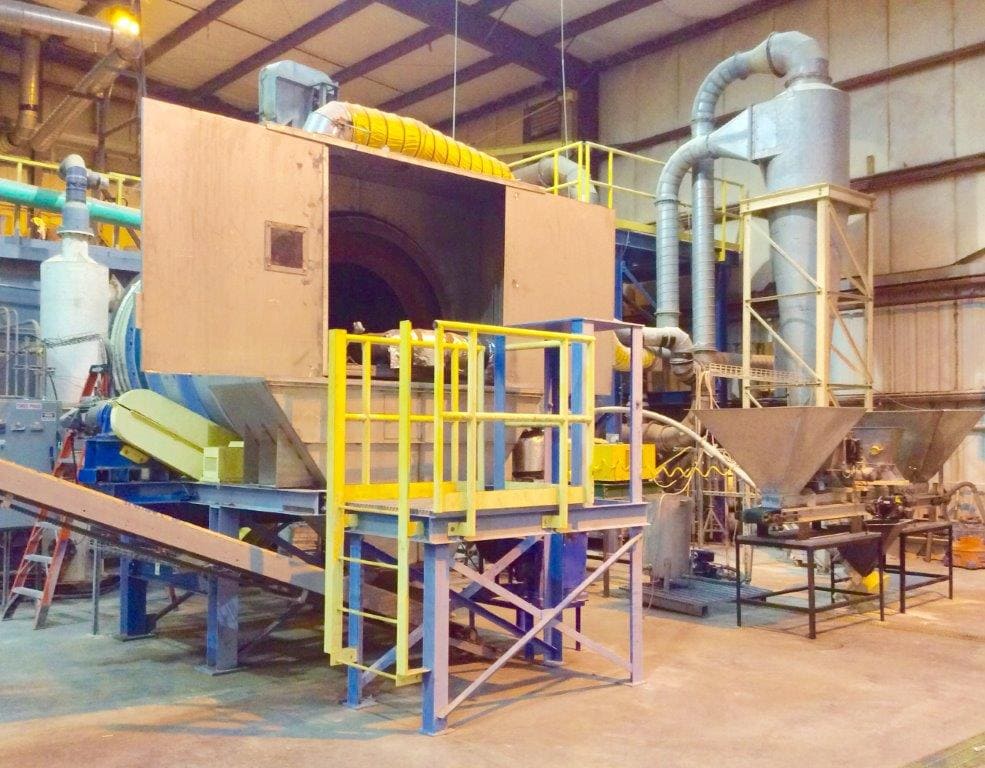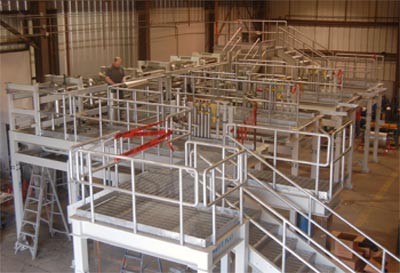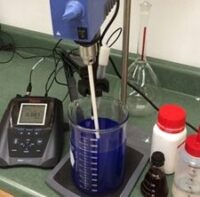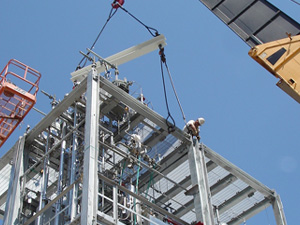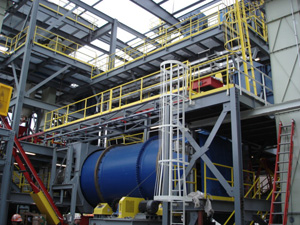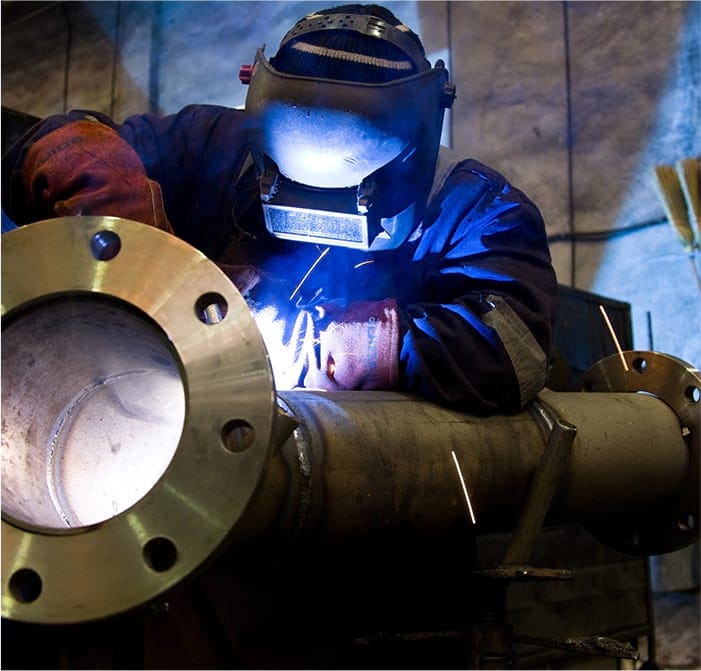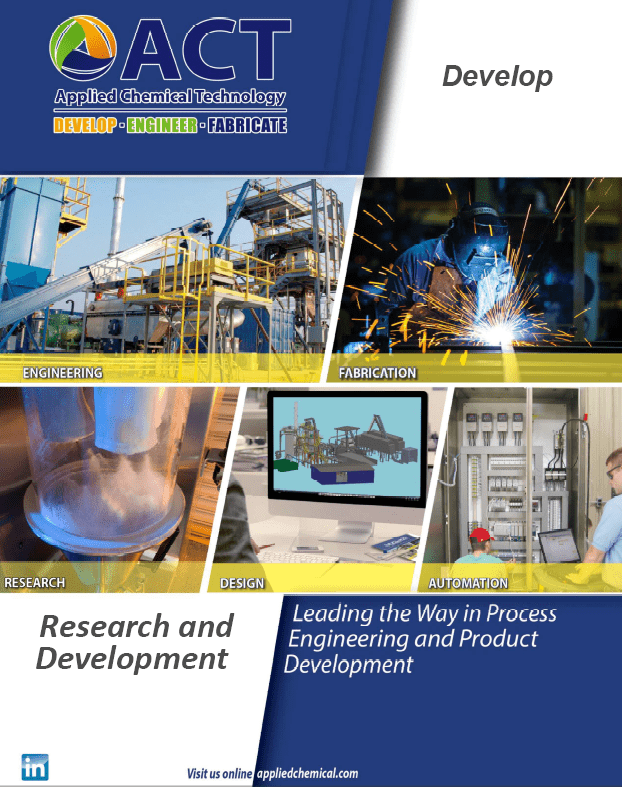Rotary Drum Coolers and Cooling Systems
Every rotary drum cooler fabricated at Applied Chemical Technology (ACT) is backed by a team of engineers, designers, and craftsmen with experience in designing and building industrial equipment and developing industrial processes dating back to 1981. Our rotary cooler designs have proven themselves to be high quality, efficient, and rugged solutions for our clients’ thermal processing systems. In addition to building cooling drums, we also design and fabricate complete thermal processing solutions including air handling, heat exchangers, material sizing, product handling, and emissions control.
Capacities: 50 lb/hr to 200 tons/hr
Diameters: Up to 14 feet
Lengths: Up to 60 feet (single section), 150 feet (multiple sections)
Shell Thicknesses: Up to 1½”






